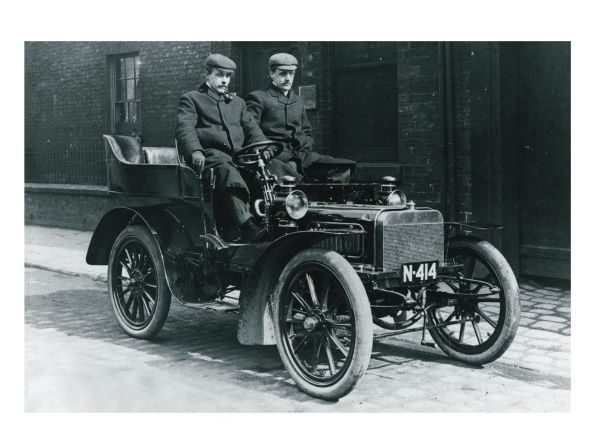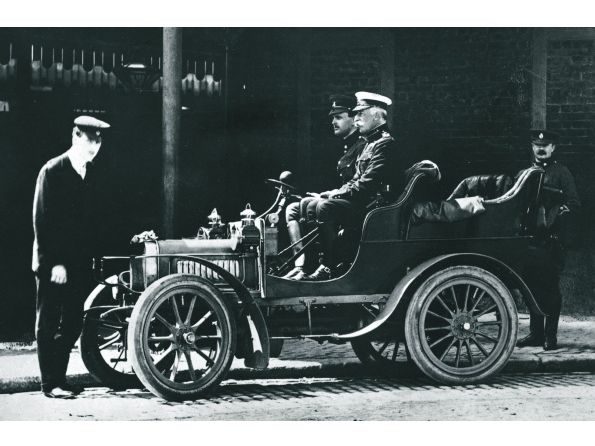Categories more
- Adventures (17)
- Arts / Collectables (15)
- Automotive (37)
- Aviation (11)
- Bath, Body, & Health (77)
- Children (6)
- Cigars / Spirits (32)
- Cuisine (16)
- Design/Architecture (22)
- Electronics (13)
- Entertainment (4)
- Event Planning (5)
- Fashion (46)
- Finance (9)
- Gifts / Misc (6)
- Home Decor (45)
- Jewelry (41)
- Pets (3)
- Philanthropy (1)
- Real Estate (16)
- Services (23)
- Sports / Golf (14)
- Vacation / Travel (60)
- Watches / Pens (15)
- Wines / Vines (24)
- Yachting / Boating (17)
Published
05/02/2024 by Rolls-Royce Motor Cars- A brief history of the Royce 10 H.P., the first motor car built by Henry Royce, and the Rolls-Royce 10 H.P., the inaugural model for the newly established marque
- First in a series celebrating a landmark model from each decade of the marque’s history, from its foundational years in the 1900s to the contemporary Goodwood era
- Year-long retrospective marks the 120th anniversary of the first meeting between Henry Royce and The Hon. Charles Stewart Rolls in 1904
- Each motor car represents significant developments in design, construction, engineering, and technology that continue to influence the marque’s products today
“We begin this retrospective series with not one, but two motor cars built by Henry Royce in the early 20th Century. The Royce 10 H.P., completely reengineered from an existing, well-regarded machine, was the catalyst for the partnership between our founders; the Rolls-Royce 10 H.P. was the first motor car built and sold under the Rolls-Royce name, setting a template for the company and its products that endures to this day. These models are inseparable in their origins and the story of the company’s foundation. Individually and together, they have a unique place in our history and therefore deserve equal recognition in the pantheon of early Rolls‑Royce motor cars.”
Andrew Ball, Head of Corporate Relations and Heritage, Rolls-Royce Motor Cars
In 1903, electrical engineer Henry Royce was running his own manufacturing company in Manchester. Though successful, trouble was brewing for Royce and other British companies, in the form of a growing tide of cheaper, imported electrical goods. Ever the perfectionist, Royce refused to lower his standards to compete, and instead looked to diversify into new areas. It was a decision that would change history.
In September 1902, Royce had bought a small French car, a 10 H.P. Decauville. It was a highly regarded model from a well-respected make, and among the very best available at that time. Characteristically, however, Royce swiftly identified numerous flaws and weaknesses in its design, engineering and construction.
Earlier that year, he had read a newly published book, The Automobile: Its Construction and Management. This convinced him to use the Decauville as the basis for a better motor car of his own. He began by carefully dismantling it, making detailed notes and drawings of every component. His new design sensibly retained some of its key features, but also introduced a plethora of innovative improvements to the bearings, radiator, carburation and transmission.
He was also obsessed with reducing the motor car’s overall weight, which he achieved through meticulous engineering and metallurgy, together with simpler measures like dispensing with the Decauville’s cast bronze warning bell that alone weighed around 20kg (over 40lb). Perhaps most significantly, Royce designed and built his own twin-cylinder engine, the first in the long line of legendary powerplants for both motor cars and aircraft he would create during his distinguished career.
On 1 April 1904, his first complete motor car – the Royce 10 H.P. – took to the road for the first time. For Royce, and the world, nothing would ever be the same again.
Meanwhile, in London, an aristocratic motoring and aviation pioneer had opened one of Britain’s first car dealerships in 1902. He was The Hon. Charles Stewart Rolls and business was booming, but Rolls was frustrated that all his stock was designed and manufactured overseas; no car produced domestically met his clients’ needs, or his own standards as a Cambridge-educated engineer and successful competitive driver.
A friend, Henry Edmunds, had been loaned one of the first production examples of Royce’s new 10 H.P. motor car. It was, he enthused, exactly what Rolls was looking for. On 4 May 1904, at the behest of his friend Edmunds, Rolls travelled to Manchester to meet Royce and try out the motor car. Though entirely different in background and temperament, the two men bonded immediately, and Rolls was smitten with the motor car. There and then, he declared he would sell every motor car Royce could make, through a new company and under a new name: Rolls-Royce.
Launched the same year, their first motor car, the Rolls-Royce 10 H.P., was a similar twin-cylinder model derived from the earlier Royce cars, but with many further design and mechanical improvements. Through this diminutive but epochal motor car, the fledgling brand rapidly gained the reputation for engineering excellence, comfort, performance and reliability it retains 120 years later.
By 1905, Rolls-Royce had added three, four and six-cylinder models, whose successes in both trials and sales were built on the twin-cylinder 10 H.P. model's foundations. All perfectly embodied Royce’s most famous principles, which still inspire the marque today: “Take the best that exists and make it better,” and “If it doesn’t exist, design it.”
















